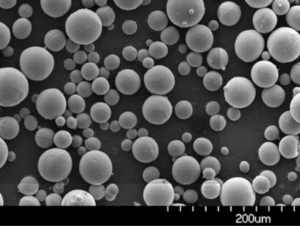إن عملية الانحلال بالطرد المركزي هي تقنية رائعة ومعقدة تُستخدم لإنتاج مساحيق معدنية دقيقة بدرجة عالية من الدقة والتجانس. إذا كنت قد تساءلت يومًا عن كيفية صنع تلك المساحيق المعدنية الكروية المثالية، أو إذا كنت مهتمًا بمعرفة التفاصيل الدقيقة للعملية، فأنت في المكان المناسب. اربط حزام الأمان، لأننا نتعمق في عالم الانحلال بالطرد المركزي، ونستكشف خفاياه وعمومياته، ونكشف الأسرار الكامنة وراء هذه التقنية الرائعة.
نظرة عامة على عملية الانحلال بالطرد المركزي
الانحلال بالطرد المركزي هو طريقة إنتاج مسحوق معدني حيث يتم تحويل المعدن المنصهر إلى قطرات دقيقة بواسطة قرص أو كوب دوار. تتصلب هذه القطرات أثناء دفعها للخارج، مما ينتج عنه مساحيق معدنية كروية. ويتم التحكم في هذه العملية بدرجة عالية، مما يسمح بإنتاج مساحيق ذات خصائص محددة، مثل توزيع حجم الجسيمات والنقاء.
التفاصيل الرئيسية
- تقنية: الانحلال بالطرد المركزي
- الاستخدام الأساسي: إنتاج مساحيق المعادن
- الآلية الأساسية: قرص دوار أو كوب دوار
- النتيجة: مساحيق معدنية كروية دقيقة
- التطبيقات: تصنيع المواد المضافة، ومساحيق المعادن، والطلاء، وغير ذلك الكثير
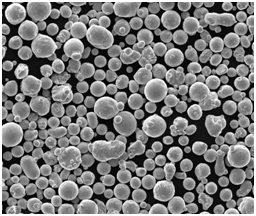
تكوين عملية الانحلال بالطرد المركزي
من الضروري فهم تركيبة عملية الانحلال بالطرد المركزي لفهم كيفية عملها وسبب فعاليتها.
| المكوّن | الوصف |
|---|---|
| المعدن المنصهر | المواد الخام، وهي عادةً معادن مثل الألومنيوم أو التيتانيوم أو الفولاذ أو سبائك النيكل. |
| جهاز الدوران | قرص أو كوب يدور بسرعات عالية لتفريق المعدن المنصهر. |
| وسيط التبريد | غالبًا ما يكون غاز خامل أو هواء خامل يبرد ويصلب القطرات المعدنية. |
| غرفة التجميع | المنطقة التي يتم فيها تجميع المساحيق المعدنية المتصلبة. |
| أنظمة التحكم | أنظمة لمراقبة وضبط درجة الحرارة والسرعة والمعلمات الأخرى. |
أنواع المعادن المستخدمة
يمكن معالجة معادن وسبائك مختلفة من خلال الانحلال بالطرد المركزي، ولكل منها خصائص وتطبيقات فريدة من نوعها.
| معدن/سبائك | الخصائص | التطبيقات |
|---|---|---|
| سبائك الألومنيوم | خفيف الوزن ومقاوم للتآكل | صناعة الطيران، والسيارات، والإلكترونيات الاستهلاكية |
| سبائك التيتانيوم | نسبة قوة إلى وزن عالية، متوافقة حيوياً | الغرسات الطبية، والفضاء |
| الفولاذ المقاوم للصدأ | مقاومة للتآكل، متينة ومقاومة للتآكل | الأجهزة الطبية والمعدات الصناعية |
| سبائك النيكل | مقاوم للحرارة ومقاوم للتآكل | التوربينات، البيئات ذات درجات الحرارة العالية |
| سبائك النحاس | موصلة ومرنة | المكونات الكهربائية، المبادلات الحرارية |
خصائص وخصائص عملية الانحلال بالطرد المركزي
تُعد خصائص المساحيق الناتجة عن الانحلال بالطرد المركزي حاسمة لتطبيقها في مختلف الصناعات. دعونا نفصل الخصائص الرئيسية.
| الممتلكات | الوصف |
|---|---|
| حجم الجسيمات | يتراوح عادةً من بضعة ميكرومترات إلى عدة مئات من الميكرومترات، اعتمادًا على معلمات العملية. |
| الشكل | كروية في الغالب، مما يعزز قابلية التدفق وكثافة التعبئة. |
| النقاء | درجة نقاء عالية بسبب البيئة الخاضعة للرقابة والحد الأدنى من التلوث. |
| الكثافة | كثافة موحدة، وهو أمر بالغ الأهمية للتطبيقات التي تتطلب خصائص مواد متسقة. |
| تشطيب السطح | سطح أملس، مفيد للتطبيقات في التصنيع المضاف والطلاء. |
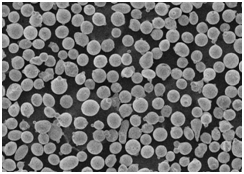
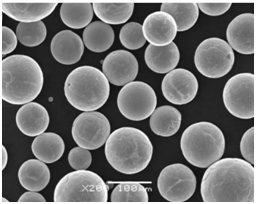
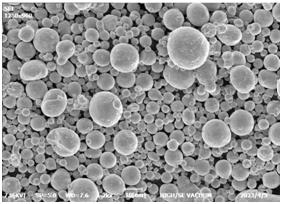

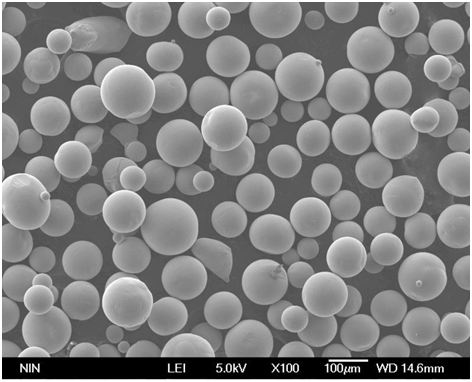
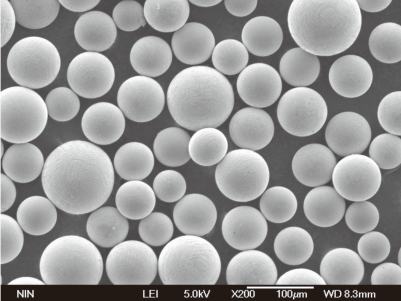
درجات ومعايير عملية الانحلال بالطرد المركزي
تضمن الدرجات والمعايير المختلفة أن المساحيق المعدنية المنتجة تلبي الاحتياجات المحددة لمختلف التطبيقات.
| الصف | قياسي | الوصف |
|---|---|---|
| الدرجة أ | ASTM B330 | عالية النقاء، مناسبة للاستخدامات الفضائية والطبية. |
| الدرجة ب | آيزو 9001 | جودة قياسية، تُستخدم في التطبيقات الصناعية العامة. |
| الدرجة C | AMS 4999 | قوة ومتانة عالية، وغالباً ما تُستخدم في تطبيقات السيارات والاستخدامات الهيكلية. |
| الصف دال | MIL-STD-3021 | معيار عسكري، يضمن الموثوقية في الظروف القاسية. |
| الصف هـ | JIS Z8901 | معيار صناعي ياباني، يستخدم على نطاق واسع في الإلكترونيات والمعدات الدقيقة. |
تطبيقات عملية الانحلال بالطرد المركزي
إن تعدد استخدامات المساحيق المعدنية التي تنتجها الانحلال بالطرد المركزي يفتح الباب أمام مجموعة واسعة من التطبيقات.
| طلب | الوصف |
|---|---|
| التصنيع الإضافي | تُستخدم في الطباعة ثلاثية الأبعاد لإنشاء أشكال هندسية معقدة بدقة عالية وأقل قدر من الهدر. |
| تعدين المساحيق | تُستخدم في تشكيل الأجزاء المعدنية ذات الأشكال المعقدة والخصائص الميكانيكية الممتازة. |
| الرش الحراري | تستخدم في طلاء الأسطح لتعزيز مقاومة التآكل ومقاومة التآكل والحماية الحرارية. |
| MIM (قولبة حقن المعادن بالحقن) | تتيح إنتاج أجزاء صغيرة ومعقدة ذات كثافة وقوة عالية. |
| الإلكترونيات | تُستخدم في تصنيع المكونات مثل المكثفات والمحاثات والمشتتات الحرارية. |
نماذج المساحيق المعدنية المحددة
دعونا نتعمق في نماذج محددة من المساحيق المعدنية المنتجة من خلال الانحلال بالطرد المركزي، مع تسليط الضوء على خصائصها وتطبيقاتها الفريدة.
1. مسحوق سبائك الألومنيوم (AlSi10Mg)
- الخصائص: خفيف الوزن، وقوة عالية، ومقاومة جيدة للتآكل
- التطبيقات: المكونات الفضائية، وقطع غيار السيارات، والإلكترونيات عالية الأداء
2. مسحوق سبائك التيتانيوم (Ti6Al4V)
- الخصائص: توافق حيوي ممتاز، نسبة قوة إلى وزن عالية، مقاومة للتآكل
- التطبيقات: الغرسات الطبية، وقطع غيار الطائرات، والسلع الرياضية عالية الأداء
3. مسحوق الفولاذ المقاوم للصدأ (316L)
- الخصائص: مقاوم للتآكل، متين، ذو خصائص ميكانيكية جيدة
- التطبيقات: الأجهزة الطبية، ومعدات تجهيز الأغذية، والمعالجة الكيميائية
4. مسحوق سبائك النيكل (Inconel 718)
- الخصائص: مقاومة درجات الحرارة العالية والتآكل، وخصائص ميكانيكية جيدة
- التطبيقات: ريش التوربينات، والمكونات الفضائية ذات درجة الحرارة العالية، وصناعة النفط والغاز
5. مسحوق سبائك النحاس (CuSn10)
- الخصائص: موصلية كهربائية وحرارية ممتازة، مقاومة للتآكل
- التطبيقات: المكونات الكهربائية، والمبادلات الحرارية، والمحامل
6. مسحوق سبائك الكوبالت والكروم (CoCrMo)
- الخصائص: مقاومة عالية للتآكل، وتوافق حيوي، وخصائص ميكانيكية ممتازة
- التطبيقات: زراعة الأسنان، وزراعة العظام، وزراعة العظام، والمكونات الفضائية
7. مسحوق فولاذ الأدوات (H13)
- الخصائص: صلابة عالية، مقاومة ممتازة للتآكل، ثبات حراري جيد
- التطبيقات: قوالب الحقن، قوالب الصب، قوالب الصب بالقالب، الأدوات ذات درجة الحرارة العالية
8. مسحوق سبائك المغنيسيوم (AZ91D)
- الخصائص: خفيفة الوزن، وخصائص ميكانيكية جيدة، ومقاومة للتآكل
- التطبيقات: قطع غيار السيارات، والمكونات الفضائية، والهياكل خفيفة الوزن
9. مسحوق البرونز (Cu10Sn)
- الخصائص: مقاومة جيدة للتآكل، ومقاومة للتآكل، وموصلية عالية
- التطبيقات: المحامل، والبطانات، والوصلات الكهربائية
10. مسحوق الفولاذ عالي السرعة (M2)
- الخصائص: صلابة عالية، مقاومة ممتازة للتآكل، صلابة جيدة
- التطبيقات: أدوات القطع، لقم الثقب، السكاكين الصناعية
تفاصيل الموردين والأسعار
يعد اختيار المورد المناسب وفهم الأسعار أمرًا بالغ الأهمية للحصول على مساحيق المعادن. إليك نظرة على بعض الموردين البارزين وتفاصيل أسعارهم.
| المورد | المسحوق المعدني | السعر (لكل كجم) | الملاحظات |
|---|---|---|---|
| هوغاناس إيه بي | سبائك الألومنيوم (AlSi10Mg) | $50 – $70 | مساحيق عالية الجودة للتصنيع الإضافي. |
| ساندفيك أوسبري | سبائك التيتانيوم (Ti6Al4V) | $150 – $200 | درجة ممتازة، مناسبة للتطبيقات الطبية والفضائية. |
| تكنولوجيا النجار | فولاذ مقاوم للصدأ (316L) | $60 – $80 | تستخدم على نطاق واسع في التطبيقات الصناعية والطبية. |
| المنتجات المعدنية المتخصصة AMETEK | سبائك النيكل (Inconel 718) | $200 – $250 | مساحيق عالية الأداء للبيئات القاسية. |
| GKN Hoeganaes | سبائك النحاس (CuSn10) | $30 – $50 | مساحيق عالية التوصيل للتطبيقات الكهربائية. |
| كيناميتال | فولاذ الأدوات (H13) | $80 – $100 | مورد موثوق لمواد الأدوات عالية القوة. |
| تقنية LPW | فولاذ عالي السرعة (M2) | $100 – $150 | المزود الرائد للمساحيق المعدنية عالية الجودة لأدوات القطع. |
| AP&C (إحدى شركات جنرال إلكتريك للمواد المضافة) | الكوبالت والكروم (CoCrMo) | $300 – $350 | درجة ممتازة للتطبيقات الطبية والفضائية. |
| براكسير للتقنيات السطحية | سبائك المغنيسيوم (AZ91D) | $40 – $60 | مساحيق خفيفة الوزن لتطبيقات السيارات والفضاء. |
| المساحيق المعدنية الملكية | مسحوق البرونز (Cu10Sn) | $20 – $40 | مساحيق فعالة من حيث التكلفة للتطبيقات الصناعية. |
إيجابيات وسلبيات عملية الانحلال بالطرد المركزي
لكل تقنية نقاط قوتها وضعفها. دعونا نقارن بين مزايا وقيود عملية الانحلال بالطرد المركزي.
مزايا
- عالية النقاء: تقلل البيئة الخاضعة للرقابة من التلوث، مما ينتج عنه مساحيق عالية النقاء.
- حجم الجسيمات المنتظم: تنتج العملية مساحيق ذات توزيع متسق لحجم الجسيمات.
- الجسيمات الكروية: يعزز الشكل الكروي للجسيمات من قابلية التدفق وكثافة التعبئة.
- تعدد الاستخدامات: مناسب لمجموعة واسعة من المعادن والسبائك.
- قابلية التوسع: يمكن توسيع نطاقها للإنتاج الصناعي.
محددات
- التكلفة: استثمار أولي مرتفع في المعدات والتكنولوجيا.
- التعقيد: يتطلب تحكمًا دقيقًا في معلمات العملية.
- القيود المادية: ليست كل المواد مناسبة للتذرية بالطرد المركزي.
- استهلاك الطاقة: استخدام طاقة عالية بسبب الحاجة إلى صهر المعادن ودورانها بسرعات عالية.

أسئلة وأجوبة
| سؤال | الإجابة |
|---|---|
| ما هو الانحلال بالطرد المركزي؟ | إنها عملية يتم فيها غزل المعدن المنصهر بسرعة لإنتاج مساحيق معدنية كروية دقيقة. |
| ما هي المعادن التي يمكن استخدامها؟ | تشمل المعادن الشائعة الألومنيوم والتيتانيوم والفولاذ المقاوم للصدأ وسبائك النيكل والنحاس. |
| ما هي تطبيقات مساحيق المعادن؟ | تشمل التطبيقات التصنيع المضاف، ومسحوق المعادن، والرش الحراري، والإلكترونيات. |
| ما هي فوائد الجسيمات الكروية؟ | تتميز الجسيمات الكروية بقابلية أفضل للتدفق وكثافة التعبئة والتوحيد. |
| كيف يتم التحكم في حجم الجسيمات؟ | يتم التحكم في حجم الجسيمات عن طريق ضبط سرعة جهاز الدوران ومعدلات التبريد. |
| ما أهمية النقاء؟ | نقاوة عالية تضمن أداء وموثوقية أفضل في التطبيقات الحرجة. |
| ما هو نطاق تكلفة مساحيق المعادن؟ | يمكن أن تختلف التكاليف اختلافًا كبيرًا، من $20 للكيلوغرام الواحد للسبائك الشائعة إلى $350 للكيلوغرام الواحد للمواد عالية الأداء. |
| كيف أختار المورّد؟ | ضع في اعتبارك عوامل مثل الجودة، والموثوقية، والتكلفة، والمتطلبات المحددة لتطبيقك. |
خاتمة
تُعد عملية الانحلال بالطرد المركزي أعجوبة الهندسة الحديثة، حيث توفر طريقة عالية التحكم لإنتاج مساحيق معدنية دقيقة بدقة وجودة لا مثيل لها. من صناعات الطيران وصناعة السيارات إلى التطبيقات الطبية وغيرها، لا غنى عن المساحيق المعدنية المنتجة من خلال هذه العملية في مشهد التصنيع المتقدم اليوم. وسواء كنت مهندسًا متمرسًا أو هاويًا فضوليًا أو شخصًا بينهما، فإن فهم هذه العملية يوفر لك رؤى قيمة في عالم علوم المواد والتكنولوجيا.
تذكر أنه على الرغم من أن العملية نفسها قد تبدو معقدة، إلا أن تطبيقاتها بعيدة المدى وتأثيرها تحويلي حقاً. لذا في المرة القادمة التي تمسك فيها بقطعة من المعدن المطبوع ثلاثي الأبعاد أو شفرة توربينات عالية الأداء، ستعرف الرحلة الرائعة التي قطعتها من معدن منصهر إلى مسحوق دقيق الصنع.
